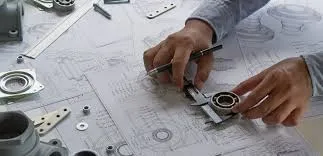
Industrial Designs
Industrial Designs
Design matters for several reasons, and its significance extends across various fields, from product and graphic design to user experience (UX) and architecture. Here are some key reasons why design is important:
First Impressions:
Design is often the first thing people notice about a product, website, or any visual element. A well-designed product or interface creates a positive first impression, capturing attention and engaging users.
User Experience (UX):
Good design enhances the user experience. It involves considering how users interact with a product, service, or system and creating designs that are intuitive, user-friendly, and enjoyable.
Functionality and Efficiency:
Design is not just about aesthetics; it also plays a crucial role in functionality and efficiency. A well-designed product or system is more likely to be efficient, easy to use, and free of unnecessary complexities.
Communication:
Design is a powerful means of communication. Visual elements, colors, and layouts convey information and messages. Effective design can communicate complex ideas in a clear and concise manner.
Brand Identity:
Design is a key component of brand identity. Consistent and well-crafted design elements help build brand recognition, trust, and loyalty. Logos, color schemes, and overall visual identity contribute to a brand’s personality.
Competitive Advantage:
In many industries, especially consumer-oriented ones, design can be a differentiator. A well-designed product or service can stand out in a crowded market, attracting customers and providing a competitive edge.
Problem Solving:
Design thinking involves a problem-solving approach that focuses on understanding users’ needs and creating solutions to meet those needs. Designers often use creativity and empathy to address challenges in innovative ways.
Emotional Connection:
Good design has the power to evoke emotions. Whether it’s the design of a website, a product, or an advertisement, the emotional response it generates can influence how people perceive and engage with it.
Accessibility and Inclusivity:
Design plays a crucial role in creating products and environments that are accessible to a diverse range of users, including those with disabilities. Inclusive design ensures that everyone can use and benefit from a particular design.
Environmental Considerations:
Sustainable design is gaining importance as the need for environmentally friendly practices becomes more evident. Designers are increasingly incorporating eco-friendly materials and practices to minimize the environmental impact of products and buildings.
In summary, design matters because it goes beyond mere aesthetics; it influences functionality, user experience, communication, and even societal and environmental considerations. It has the power to shape perceptions, solve problems, and create meaningful connections between users and the products or services they interact with.

IP Litigation
Indian Judicial system comprised of a 688 district courts, 25 high courts and a supreme court who is final adjudicating
View more
Office Action Support
We prepare our comments for all types of objections in office actions/ First Examination Report issued from Indian Paten
View more